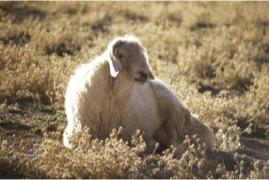
28th EAA Annual Meeting
31 August - 3 September 2022 // Budapest, Hungary
Oral Paper: Manon Vuillien, Emmanuelle Vila, Jwana Chahoud, Moussab Albesso, Agraw Amane, Rémi Berthon, Sofiane Bouzid, Bea de Cupere, Hossein Davoudi, Homa Fathi, Daniel Helmer, Joséphine Lesur, Azadeh Mohaseb, Lionel Gourichon, Marjan Mashkour, Thomas Cucchi
Draw me a sheep: a morphological investigation on sheep’s bones of current and past populations from Southwest Asia (EVOSHEEP project).
Sheep husbandry has played a major role in the economy of human societies in Southwest Asia over the last 10 millennia. However, if archaeological and archaeozoological “clues” provide insight into husbandry practices devel- oped by early human societies, it is still difficult to assess the diversity of first breeds these societies relied on, such as, anthropogenic selective pressure and ecological conditions. To tackle this issue, EVOSHEEP project focuses on the complex history of early sheep husbandry in Southwest Asia between the Late Neolithic and the Bronze Age using an integrated approach including archaeozoology, morphometrics, genetics, iconography, philology. The objective is to identify the biological and anthropological components underlying the emergence and development of early sheep breeds. In this paper we present our first results based on modern breeds from Southwest Asia and East Africa using 3D geometric morphometrics on isolated elements from forelimb (distal humerus) and hindlimb (calcaneum and astragalus) as a proof of concept to explore the morphological diversity of sheep. These bones have proven to be powerful tools to understand both herding strategies and environmental conditions. The next step is to test the morphological patterns on ancient populations belonging to forty archaeological sites and covering five millennia of economic and cultural transformations, between the 6th and the 1st millennium BC.